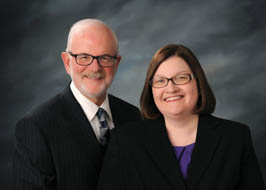 Among the major tweaks in the 2005 bankruptcy law revision is the so-called means test. Simply put, all consumer debtors must compare household income to their statewide median income of households of similar size. NOTE: debtors with business debts ARE NOT subject to the means test.
Among the major tweaks in the 2005 bankruptcy law revision is the so-called means test. Simply put, all consumer debtors must compare household income to their statewide median income of households of similar size. NOTE: debtors with business debts ARE NOT subject to the means test.
United States Code §707 (b) (2) (A) (i) (I) and (II). Reference: Chapter 7 Discharge.
Reigning in on the relative ease of filing and obtaining discharge of unsecured debt in chapter 7 is central focus of BAPCPA, but most debtors pass the means test leading blogger Steve Jakubowski to ask if the bark of the means test is worse than its bite?
If a consumer debtor’s household income is above the statewide median income, the consumer must use IRS guidelines, not actual expenses, for certain household living expenses to determine if he has excess disposable income to pay his creditors.
In chapter 7 cases, the means test is calculated on an official form designated Form B22A. B22A first compares a consumer’s household income to a statewide median. If lower, the consumer debtor may file chapter 7. If higher, the consumer debtor must fill out the balance of B22A, forced to use IRS allowances for many expenses before arriving at a number referred to as “disposable incomeâ€. If the consumer debtor has left over income over a 60-month time period of:
- 25% of consumer’s unsecured debt or $6,000, which ever is higher, or
- $10,000 [$166.67 per month]
the consumer debtor’s case is presumed to be an abuse of chapter 7 and is subject to dismissal on motion of the United States Trustee or any party in interest. A consumer debtor who owes more than $40,000 in unsecured debts is presumed to have the ability to repay if he can afford to pay $166.67 per month over 60 months as derived under the B22A formula.
To avoid the result of a presumed abuse per Code §707 (b) (2) (A) (i) (I) and (II), a consumer debtor must file a chapter 13 case. Congress believed that chapter 13 cases led to more unsecured non priority debt getting paid.
In chapter 13 cases, debtors must fill out Form B22C, a different version of the means test. B22C determines the amount a consumer debtor will repay and for what period of time in a chapter 13 plan. If household income is below median, the period is 36 months. If above median, the period is 60 months. B22C allows more deductions from gross income to determine disposable (left over) income.
The overwhelming number of chapter 13 debtors filing during BAPCPA’s first 30 months in the District of Kansas Topeka Division have household income below median and pay nothing to non priority unsecured creditors. The overwhelming number of debtors with above median income are allowed to file a chapter 13 case with little or no payment to unsecured non priority creditors as B22C allows more deductions from gross income.
Example: Voluntary retirement contributions at debtor’s employer can be deducted in chapter 13, but not chapter 7 cases. Legislative history indicates Congress’ policy was to encourage chapter 13 cases with this provision. But 401K plan managers also greatly benefit.
Secured debt, 401K loans, child support, and taxes can all be deducted from gross income to arrive at disposable income in chapter 13. By allowing deduction of taxes, child support, secured debt and contributions to retirement plans, Congress favored home mortgage lenders, car manufacturers/lenders, child support collectors, and tax collectors over the interests of credit card companies.
A debtor who chooses chapter 13 gets the benefit of continuing to pay back 401K loans and contributing to 401K plans. The additional amounts a debtor can deduct for 401K plans can be $100’s to $1,000’s per month.
The downside of chapter 13: debtors are subject to oversight for at least a 36 month period while paying down debt.
Many, many debtors are opting for chapter 13 cases that offer the best of both worlds– higher income households are allowed to pay down large secured debt payments on houses and cars and contribute to 401K plans at their creditors’ expense(compared to prior Bankruptcy Code provisions). The number of chapter 13 case has surged all over the United States. Two-thirds of the cases filed In the Topeka Division are chapter 13 cases, virtually a reversal of the percentages of cases filed pre-BAPCPA.
There are many debtors in divisions of the federal districts around the United States, including the Kansas City Division in Kansas federal court, where prevailing income is higher than statewide median, so more funds will be “trapped†by the means test. However, those households frequently owe second mortgages, high car payments, and have 401K plans available. IRS Guidelines for allowable expenses are higher in some categories for higher income households. Those deductions often result in no disposable income for unsecured claims.
The point is that the small Mt. Everest that higher income households must climb to use bankruptcy court for debt relief in the wake of Bankruptcy “reformâ€. The stated goal of Congress to eliminate the individual Judge’s discretion made on a case-by-case basis of individual’s “ability to repay†has succeeded. But the special interest exceptions to the credit card industry’s “Means Test†results in very little additional repayment to unsecured non priority creditors in the great majority of cases. Any highly qualified attorney can guide higher income debtors through bankruptcy and relieve overly burdensome debt, regardless of BAPCPA’s means test.

